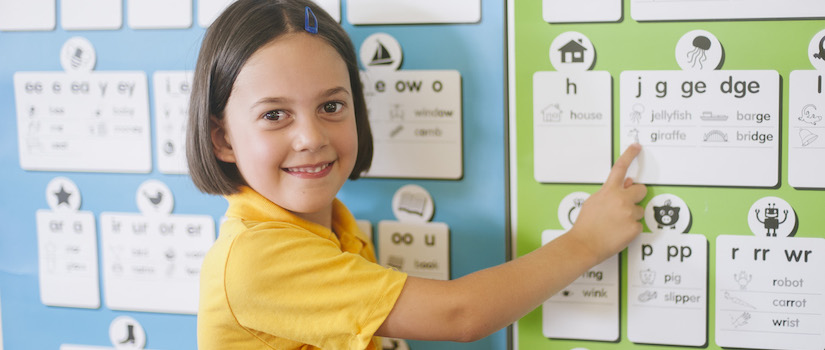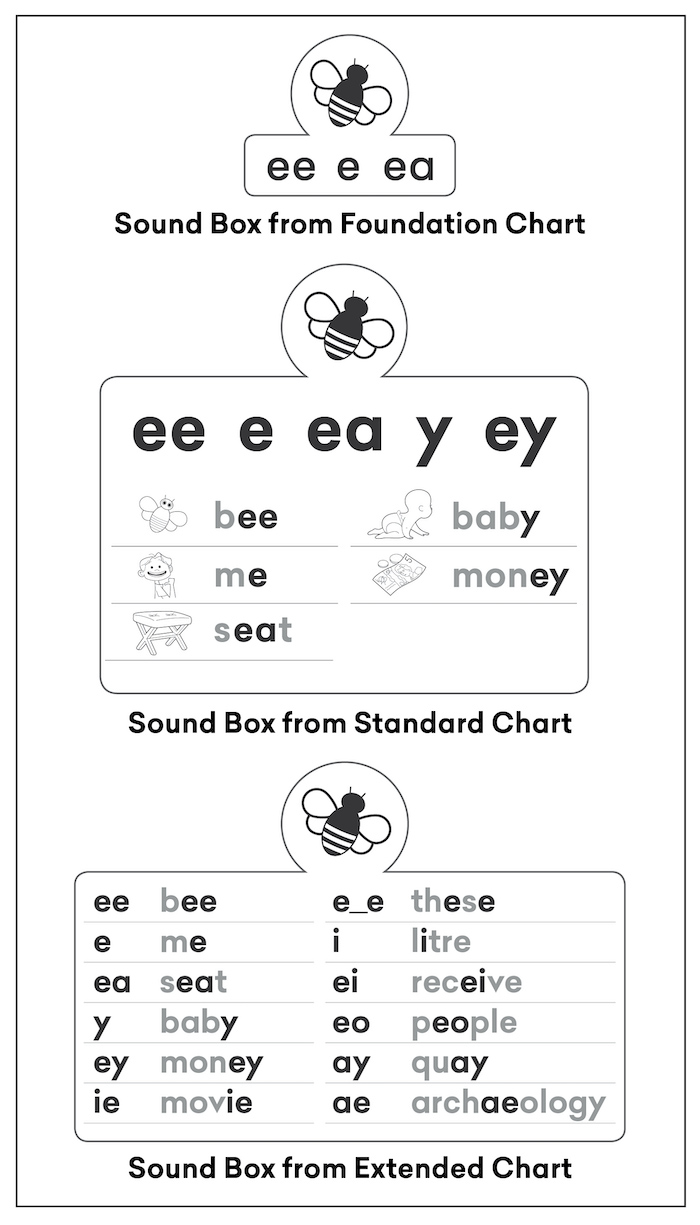Articles & Videos
Superchart your spelling lessons
Categories
Subscribe to our newsletters
Receive teaching resources and tips, exclusive special offers, useful product information and more!
Back to Games & Activities articles & videos
Superchart your spelling lessons
Sound Waves Literacy 18/8/21

The Sound Waves charts are a valuable resource to use throughout the week. Discover the key features of the teaching and student charts and try our ideas for using them in your classroom.

About the charts
Sound Waves Teaching Charts and Student Charts are available in Foundation, Standard and Extended versions to suit every classroom from F–6.
All charts feature a Sound Box for each of the 43 phonemes (sounds) of Australian English. A Sound Box includes the sound icon and graphemes (letter/s) used to represent that sound. The complexity of graphemes increases across the three versions:
- Foundation charts only include the graphemes taught in the Foundation program
- Standard charts feature common graphemes with word examples and are suitable for Years 1–6
- Extended charts feature more unusual graphemes with word examples that students will encounter in upper primary.
The Sound Boxes in each version of the teaching and student charts are displayed in exactly the same order so you can easily direct students to locate a specific Sound Box.
Using the charts
You and your students will encounter a variety of opportunities to use the charts throughout the week. Try these three ideas in your next week’s lessons.
1. Introduce the focus phoneme
Use the teaching charts at the start of the week to help introduce the week’s focus phoneme to the class.
Point to the relevant Sound Box and get students thinking about the sound by asking questions such as:
- Is the sound a vowel sound or a consonant sound?
- What is the icon?
- What are the graphemes in the Sound Box?
- What is the example word for each grapheme?
- Can you think of other words that have these graphemes?
- Can you think of other graphemes that represent this sound?
After you’ve discussed the Sound Box on the teaching charts, ask students to locate the Sound Box on their student charts so they can easily refer to it throughout the week.
2. Play games
Boost student engagement and use the teaching or student charts to play a variety of games. Try these two Sound Waves games:
Find It First
Use the teaching charts for this fast-paced two-player game. Have each player stand on one side of the teaching charts holding a pointer. Provide a clue for a certain Sound Box, and the first player to point to it on the charts scores a point. The rest of the class can umpire and raise their left or right hand to signal which player wins a round. The first student to score three points wins.
Adapt the clues for different year and ability levels. For lower years students, ask them to find the Sound Box for:
- /j/ as in jellyfish
- the first sound in wave
- the last sound in bag
For older students, or to make the game more challenging, ask them to find the Sound Box for:
- the first sound in about
- the last sound in laugh
- the third sound in emergency
Variation:
To get your whole class playing along, ask students to pair up and play Find It First using one student chart per pair.
Tell Me a Word
Use the teaching charts for this engaging two-player game. Ask two students to stand side by side. Point to a Sound Box on the teaching charts. The first student to say a word that contains that sound scores a point. For example, if you point to ![]() , students could say ship, smash, chef, etc. Repeat with another sound. The first student to score three points wins.
, students could say ship, smash, chef, etc. Repeat with another sound. The first student to score three points wins.
Variation:
Have your upper years students say words containing graphemes of your choice. Ensure the sound and grapheme in their word matches the sound and grapheme of the chosen Sound Box. For example, if you point to ![]() and choose the grapheme ow, students can say yellow or snow but not clown. Answers must be words that don’t appear on the charts!
and choose the grapheme ow, students can say yellow or snow but not clown. Answers must be words that don’t appear on the charts!
3. Use as a reference when writing
Whether students are in a Sound Waves lesson or composing texts in another lesson, encourage them to have their Sound Waves Student Chart handy.
Students can use their chart to help spell difficult or unknown words. Prompt them to identify the phoneme they are trying to represent in a word, then locate the associated Sound Box on the chart to see the different graphemes that can represent the phoneme.
You can also help students correct misspelt words using the chart. When you come across a misspelt word, identify the sound of the incorrect grapheme (e.g. ![]() in akross), then point to the associated Sound Box on the chart for the student to reference. This method of explicitly pointing to the correct grapheme rather than verbally correcting a student’s spelling helps them to map phoneme–grapheme relationships.
in akross), then point to the associated Sound Box on the chart for the student to reference. This method of explicitly pointing to the correct grapheme rather than verbally correcting a student’s spelling helps them to map phoneme–grapheme relationships.